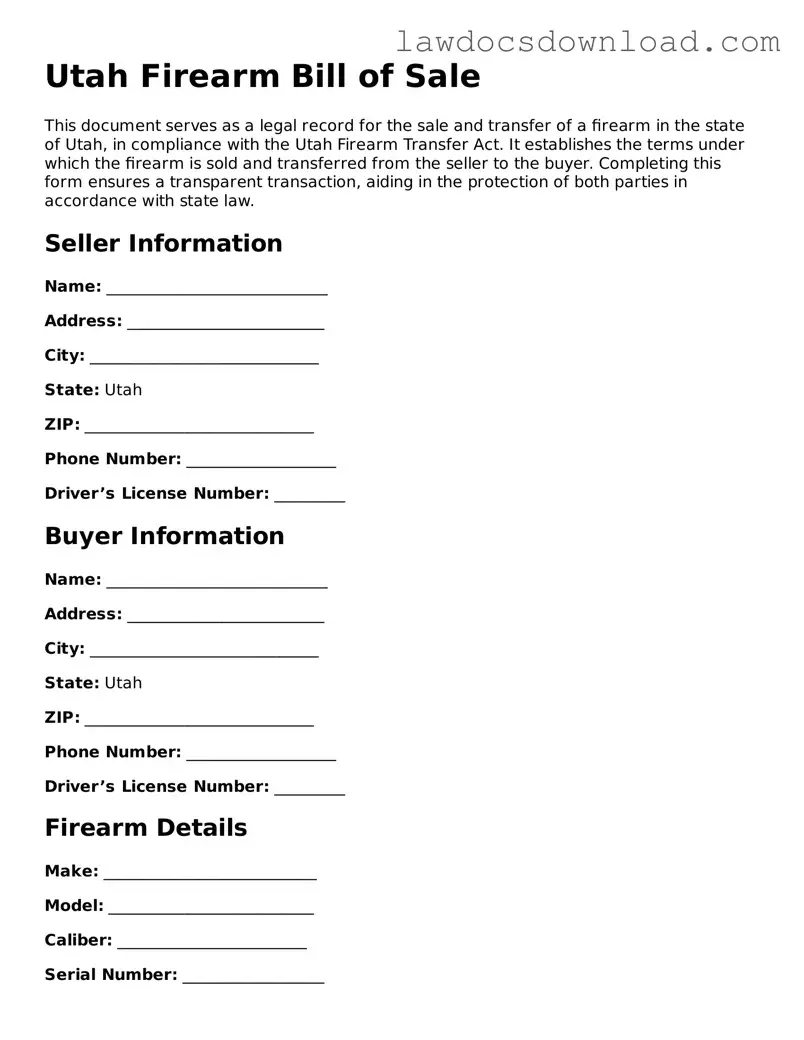Utah Firearm Bill of Sale
This document serves as a legal record for the sale and transfer of a firearm in the state of Utah, in compliance with the Utah Firearm Transfer Act. It establishes the terms under which the firearm is sold and transferred from the seller to the buyer. Completing this form ensures a transparent transaction, aiding in the protection of both parties in accordance with state law.
Seller Information
Name: ____________________________
Address: _________________________
City: _____________________________
State: Utah
ZIP: _____________________________
Phone Number: ___________________
Driver’s License Number: _________
Buyer Information
Name: ____________________________
Address: _________________________
City: _____________________________
State: Utah
ZIP: _____________________________
Phone Number: ___________________
Driver’s License Number: _________
Firearm Details
Make: ___________________________
Model: __________________________
Caliber: ________________________
Serial Number: __________________
Sale Information
Date of Sale: ____________________
Sale Price: $____________________
By signing below, both parties acknowledge they are legally allowed to buy/sell firearms within the state of Utah. They affirm that all the information provided is accurate and the firearm is not stolen and is sold in "as is" condition. They agree to the terms of sale as described above.
Signatures
Seller's Signature: _________________ Date: _________
Buyer's Signature: _________________ Date: _________
This document is executed in good faith and is affirmed to be true, complete, and accurate to the best knowledge of the involved parties. It is advised to keep copies of this document for personal records and potential future reference.
